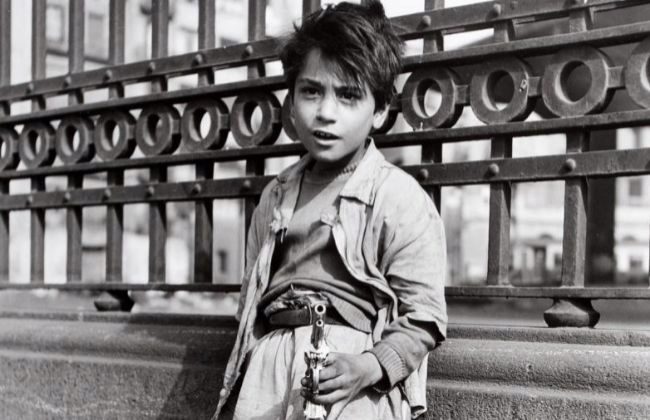In a photograph taken by Francisco Ontañón in 1959, his friend Ramón Masats can be seen holding in his hands, as if it were a trophy, the book Cartier-Bresson had published in 1952: The Desicive Moment . In a way, the "decisive moment" paradigm, that desire to capture without any manipulation a fleeting , unrepeatable and meaningful moment , marked the direction of a good part of the production of photographers who developed documentary poetics during the 50s and 60 in a black and white Spain.
Ontañón was one of the most recognized names of that post-war generation, to which the aforementioned Masats, Quéladó, Terré, Maspons or Pérez Siquier, among others, also belonged. Fascinated by the contradictions of Spanish developmentalism , these photographers agreed and collaborated in spaces such as the Photographic Association of Catalonia, the AFAL environment or the La Palangana collective. Its institutional recognition, as a heterogeneous group that shared aesthetic concerns, began during the 1980s, with exhibitions such as Photographers of the Madrid school (MEAC, 1988), to which many other collective and individual ones have happened. Today, become classics of Spanish photography, well established in the space it occupies in the world of contemporary art, it is worth remembering that, for a long time, his works did not operate in the sacred territory of art, but in the of information, editing or advertising.
The exhibition dedicated to Ontañón (1930-2008), which, curated by Alberto Martín, can be seen in the Sala Canal de Isabel II has the virtue of placing his photography in a complex visual magma in which a professional and an artistic face intersected, referred to in the title of the show, Francisco Ontañón. Office and creation . Thus, he is presented as a versatile photographer, able to adapt to the most varied spaces and formats. The "trade" refers to a knowledge of the technique and the possibilities of the medium, but also to the resources necessary to meet with solvency the orders that a professional could receive during the 60s and 70s, when photography was not yet standardized as art . The "creation" points to a way of seeing and working, to an author's brand that permeates all his work, regardless of whether it appears framed to be hung on the wall or printed in a magazine.
Formed like so many others of his generation in amateur photography, Ontañón soon begins to work for various media. Taking photographs for Europa Press or for the illustrated magazines Ama and Spanish news allowed him to live from his work, cover important international events and travel to cities such as Paris or New York, which starred in some of his reports.
Ontañón also signed some photobooks that have gone down in the history of the genre , such as The Illuminated Days - from the mythical Word and Image collection - or Living in Madrid . The book, in fact, was the favorite discourse for a generation that worked when there were barely any exhibition halls that programmed photography, and yet the publishing industry found a niche market for the photobook . The printed page of books and magazines, in turn, allowed the photographer to think of each image within a narrative series, as the link in a visual chain that made sense with the passing of the pages.
On the other hand, the exhibition manages to take off Ontañón from the stereotyped images that circulate on the subject of Spanish postwar photography. While it is true that in his work - and in this exhibition - we can see some of the reasons that, as visual topics, are part of the imaginary of this generation of creators - the folklore of Holy Week, old with ducks in hand, Children playing with a Seat 600 ...-, we are also shown another more colorful and popular dimension of his work in the selection of album covers - Cecilia, Las Grecas, Miguel Ríos, Raphael or Enrique Morente - which Ontañón signed in the 60s and 70s. These pop images remind us that the photographic image is found in the most varied everyday objects and that there are equal parts of trade and creation.
According to the criteria of The Trust Project
Know more- culture
- Photography
- Art
PHOTOGRAPHER Robert Frank, the best 'spy' in America, at 94
Culture Ollaur Eliasson: ecological transgression
Fall 2019The 25 most anticipated exhibitions this fall

